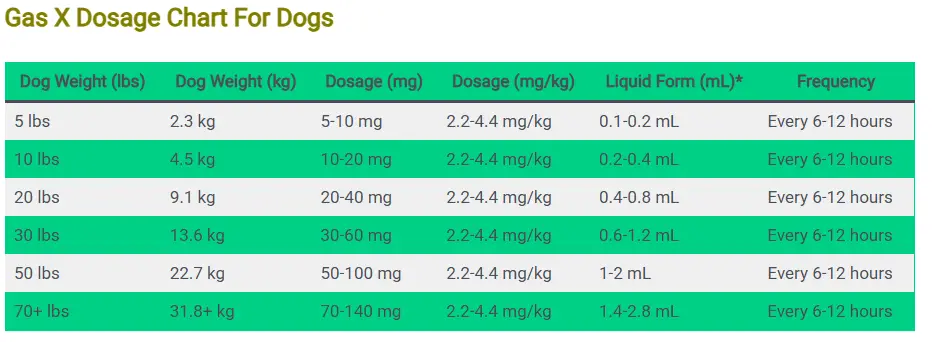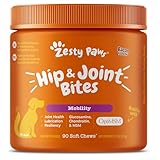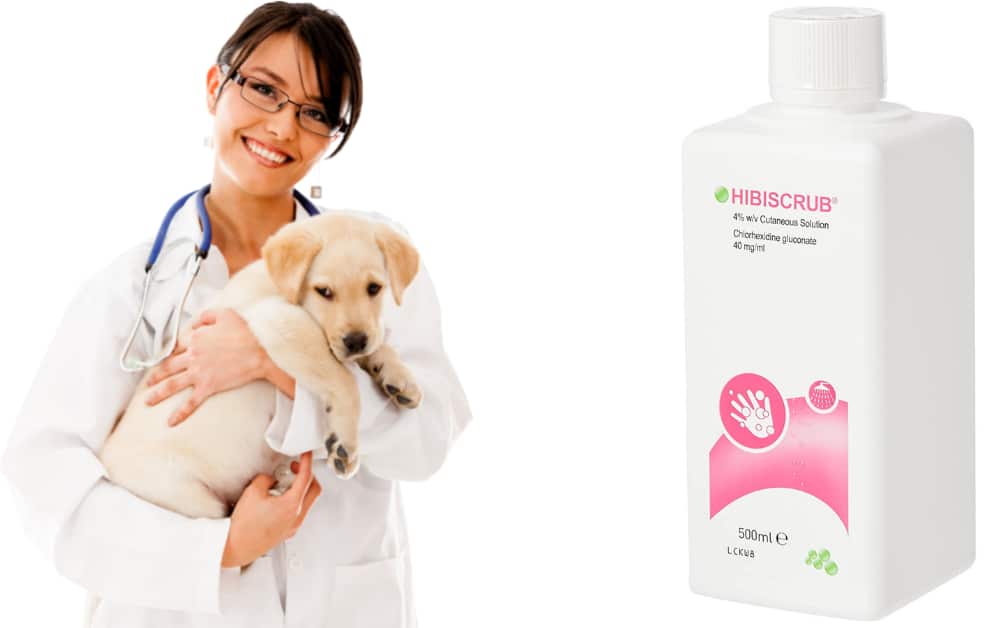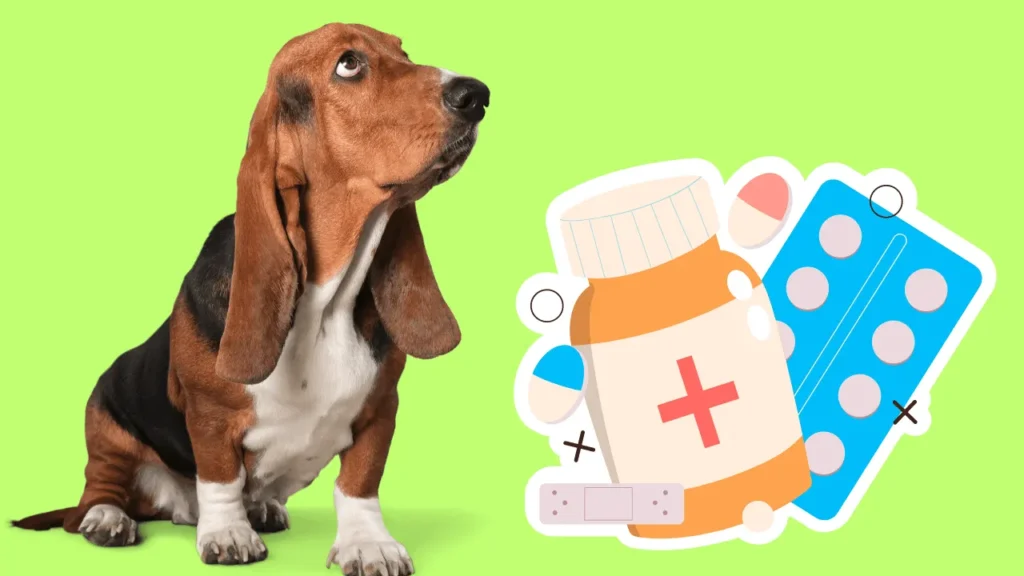As a loving pet owner, it’s heart-wrenching to watch your dog or cat struggle with uncomfortable gas and bloating. Gas X, containing the active ingredient simethicone, offers relief by breaking up gas bubbles in the digestive tract, making it easier for your pet to pass them naturally.
This comprehensive guide will walk you through the proper Gas X dosage for dogs and cats, safety considerations, and when this over-the-counter remedy is appropriate for your furry family member.
Key Takeaways
- Simethicone (Gas X) can provide temporary relief for gas discomfort in dogs and cats when used appropriately.
- The recommended dosage for dogs is 1-2 mg per pound of body weight every 6-12 hours.
- For cats, the typical dosage is 0.3-0.5 mL of liquid simethicone every 8-12 hours.
- Always consult your veterinarian before administering any medication to your pet.
- Gas X is not a substitute for veterinary care, especially in cases of severe abdominal distress.
- Addressing the underlying causes of gas through dietary and lifestyle changes is essential for long-term relief.
Gas X Dosage for Dogs
For dogs, the general dosage recommendation for simethicone (Gas X) is 1-2 mg per pound of body weight every six to twelve hours as needed. Always consult your veterinarian for the correct medication dosage for your furry friend.
- One package of 72 cherry-flavored Gas-X Extra Strength Chewable Gas Relief Tablets with Simethicone 125 mg for bloating and gas relief; number 1 Anti-Gas Relief Brand
- Gas-X simethicone gas relief tablets relieves gas in minutes and offers bloating relief
- Gas-X antigas chewable simethicone tablets provides fast gas relief and bloating relief, rescuing you from embarrassing situations and helping you get back to feeling like yourself
- Contains 125 mg of maximum-strength simethicone for fast relief of gas, bloating and discomfort
- Simethicone extra strength gas relief tablets are easy to take and come in cherry flavor
Gas X Dosage Chart For Dogs
| Dog Weight (lbs) | Dog Weight (kg) | Dosage (mg) | Dosage (mg/kg) | Liquid Form (mL)* | Frequency |
|---|---|---|---|---|---|
| 5 lbs | 2.3 kg | 5-10 mg | 2.2-4.4 mg/kg | 0.1-0.2 mL | Every 6-12 hours |
| 10 lbs | 4.5 kg | 10-20 mg | 2.2-4.4 mg/kg | 0.2-0.4 mL | Every 6-12 hours |
| 20 lbs | 9.1 kg | 20-40 mg | 2.2-4.4 mg/kg | 0.4-0.8 mL | Every 6-12 hours |
| 30 lbs | 13.6 kg | 30-60 mg | 2.2-4.4 mg/kg | 0.6-1.2 mL | Every 6-12 hours |
| 50 lbs | 22.7 kg | 50-100 mg | 2.2-4.4 mg/kg | 1-2 mL | Every 6-12 hours |
| 70+ lbs | 31.8+ kg | 70-140 mg | 2.2-4.4 mg/kg | 1.4-2.8 mL | Every 6-12 hours |
Note: Most liquid simethicone products contain approximately 40 mg per 1 mL. Always check the concentration of your specific product.
When administering Simethic Gas X to your dog, you can mix the appropriate dose with a small amount of food or give it directly using a dropper or syringe. Many pet owners find that hiding the medication in a small treat or peanut butter (xylitol-free!) makes administration easier.
Gas X Dosage for Cats
Cats have different dosage requirements than dogs due to their smaller size and unique metabolism. For cats, the typical dosage is 0.3-0.5 mL of liquid simethicone every eight to twelve hours as needed.
Cat Simethicone Gas X Dosage Chart
| Cat Weight (lbs) | Cat Weight (kg) | Liquid Form (mL) | Dosage (mg) | Approx. mg/kg Range | Frequency |
|---|---|---|---|---|---|
| Under 8 lbs | Under 3.6 kg | 0.3 mL | 12 mg | 3.3-5.0 mg/kg* | Every 8-12 hours |
| 8-12 lbs | 3.6-5.4 kg | 0.4 mL | 16 mg | 3.0-4.4 mg/kg** | Every 8-12 hours |
| Over 12 lbs | Over 5.4 kg | 0.5 mL | 20 mg | 2.5-3.7 mg/kg*** | Every 8-12 hours |
Administering medication to cats can be challenging. Consider mixing the simethicone with a strong-smelling wet food or using a pet piller if giving a tablet form. Always approach your cat calmly and have treats ready for afterward to create a positive association.
What Is Simethicone and How Does It Work for Pets?
Simethicone is an anti-foaming agent that works by reducing the surface tension of gas bubbles in the gastrointestinal tract. Unlike many medications that are absorbed into the bloodstream, simethicone works locally in the digestive system without being absorbed by the body. This makes it a relatively safe option for relieving gas discomfort in both dogs and cats when used appropriately.
The mechanism is simple yet effective: simethicone causes smaller gas bubbles to combine into larger ones, which are then easier for your pet to expel through burping or passing gas. This action provides relief from the uncomfortable pressure and bloating associated with excess gas.
When Should You Consider Gas X for Your Pet?
Before reaching for any medication, it’s important to understand when Gas X might be appropriate for your pet. Consider simethicone if your dog or cat is showing these mild symptoms:
- Visible abdominal discomfort or bloating
- Excessive flatulence
- Mild gurgling sounds from the abdomen
- Restlessness due to gas discomfort
However, it’s crucial to recognize that Gas X is not a cure-all and should never replace proper veterinary care. If your pet is experiencing severe symptoms such as vomiting, diarrhea, loss of appetite, or extreme lethargy, these could indicate a more serious condition requiring immediate veterinary attention.
Safety Considerations When Using Gas X for Pets
While simethicone is generally considered safe for dogs and cats, there are important safety considerations to keep in mind:
- Always Consult Your Veterinarian First: Before administering any medication, including over-the-counter options like Gas X, consult with your veterinarian. They can confirm that your pet’s symptoms are indeed due to gas and not something more serious.
- Check for Other Medications: Simethicone can interact with certain medications, including thyroid medications. Inform your vet about all medications and supplements your pet is currently taking.
- Avoid Flavored Varieties: Some Gas X products contain xylitol, an artificial sweetener that is toxic to dogs. Always check the ingredient list and choose plain, unflavored simethicone products.
- Monitor for Side Effects: While rare, some pets may experience allergic reactions to simethicone. Watch for signs like hives, difficulty breathing, or swelling of the face, lips, or tongue.
- Use Only for Short-Term Relief: Gas X is intended for temporary relief of gas symptoms. If your pet’s symptoms persist for more than 24-48 hours, seek veterinary care.
When Gas X Is NOT the Answer: Recognizing Serious Conditions
It’s crucial to understand that Gas X is not appropriate for all cases of abdominal discomfort in pets. Certain serious conditions require immediate veterinary intervention and may be worsened by delaying proper treatment.
Gastric Dilatation-Volvulus (GDV) in Dogs
GDV, commonly known as bloat, is a life-threatening condition that primarily affects large and giant breed dogs. Symptoms include:
- Distended, hard abdomen
- Unproductive retching
- Excessive drooling
- Restlessness and pacing
- Rapid breathing
- Pale gums
If you suspect your dog has bloat, seek emergency veterinary care immediately. Do not attempt to treat with Gas X.
Intestinal Obstruction
Both dogs and cats can develop intestinal obstructions from swallowing foreign objects, which can be fatal without prompt surgical intervention. Symptoms include:
- Vomiting
- Abdominal pain
- Loss of appetite
- Constipation or diarrhea
- Lethargy
Gas X will not resolve an obstruction and may delay necessary treatment.
Alternative Approaches to Managing Pet Gas
While Gas X can provide temporary relief, addressing the root cause of your pet’s gas issues is essential for long-term health. Consider these alternative approaches:
Dietary Modifications
- Slow Feeder Bowls: These can help reduce air swallowing during meals, which is a common cause of gas.
- Probiotics: Adding a pet-specific probiotic to your pet’s diet can improve gut health and reduce gas.
- Dietary Changes: Some pets are sensitive to certain ingredients. Working with your vet to identify and eliminate problematic foods can significantly reduce gas.
- Smaller, More Frequent Meals: Feeding smaller portions throughout the day rather than one or two large meals can aid digestion and reduce gas.
Natural Remedies
- Ginger: Small amounts of ginger can help soothe the digestive tract and reduce gas.
- Peppermint: In very small amounts, peppermint can help with gas, but use caution as it can be too strong for some pets.
- Activated Charcoal: Under veterinary guidance, activated charcoal can help absorb gas and toxins in the digestive tract.
Read More From Our Medication Guide:
FAQs
Can I give my dog human Gas X?
Yes, you can give your dog plain simethicone (Gas X) that is formulated for humans, as long as it doesn’t contain additional ingredients like xylitol, which is toxic to dogs. Always check the ingredient list and consult with your veterinarian for the appropriate dosage.
How quickly does Gas X work for pets?
Simethicone typically begins working within 30 minutes to an hour after administration. However, the exact timing can vary depending on your pet’s size, metabolism, and the severity of their gas discomfort.
Are there any side effects of Gas X for pets?
Simethicone is generally well-tolerated by pets with minimal side effects. In rare cases, some pets may experience allergic reactions such as hives, facial swelling, or difficulty breathing. If you notice any unusual symptoms after administering Gas X, contact your veterinarian immediately.
Can I give my cat Gas X if she’s pregnant or nursing?
You should always consult with your veterinarian before giving any medication to a pregnant or nursing cat. While simethicone is generally considered safe, your vet can provide guidance based on your cat’s specific health status and needs.
Final Thoughts
Dealing with a gassy pet can be frustrating, but with the right information and guidance, you can help provide relief safely and effectively. Remember that while Gas X can be a helpful tool for managing temporary gas discomfort, it’s not a substitute for proper veterinary care when more serious issues are present.
By understanding the appropriate dosage, recognizing when veterinary intervention is needed, and addressing the underlying causes of your pet’s digestive issues, you’re taking important steps to ensure your furry friend stays happy, healthy, and comfortable for years to come.
Always prioritize your pet’s well-being by working closely with your veterinarian to develop a comprehensive approach to digestive health that meets your pet’s specific needs. After all, our pets rely on us to make the best decisions for their health, and being informed is the first step in being the best pet parent you can be.













